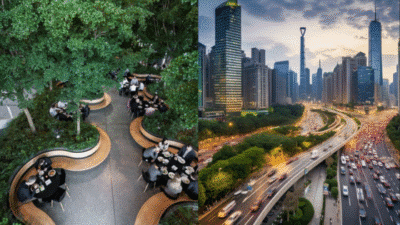
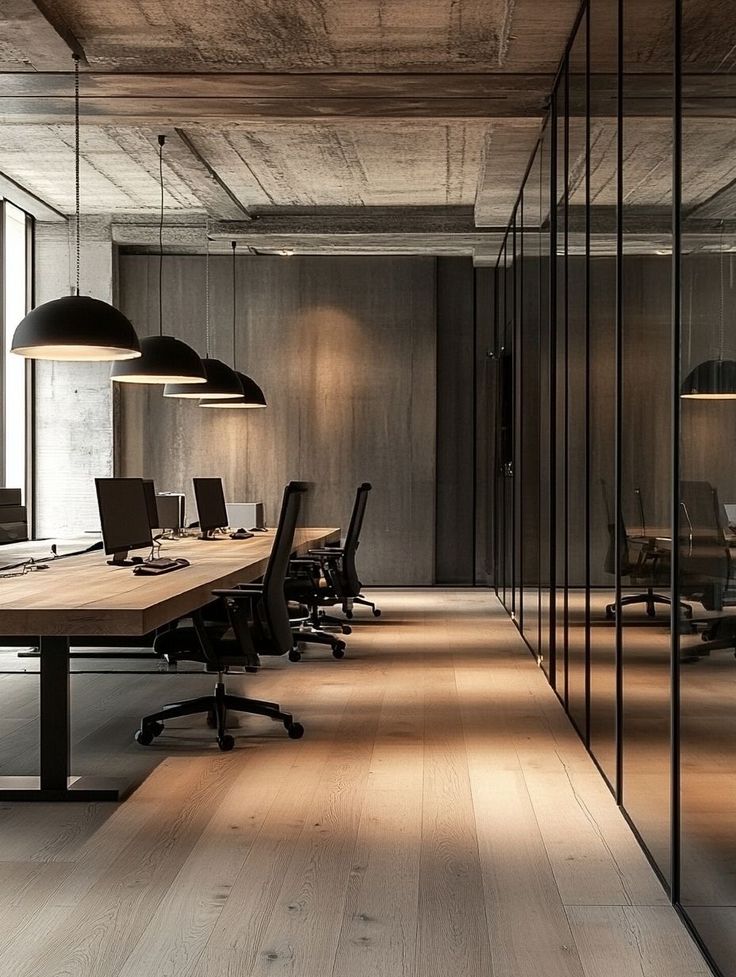
Industrial minimalism is a design style that combines the raw, tough look of industrial spaces with simple, clean lines. It focuses on using basic materials like metal, wood, and concrete while keeping the space uncluttered and functional. This style is popular because it creates a modern and practical atmosphere without extra decoration.
People use industrial minimalism to give their homes or offices an open, airy feel. It highlights structural elements like exposed pipes, beams, and brick walls, which become part of the decor. The look is both stylish and easy to maintain, making it a smart choice for many spaces.
Lighting and accessories are kept simple but help enhance the industrial vibe. This design also supports eco-friendly ideas by reusing old materials and focusing on sustainability. Industrial minimalism is flexible and can work well in different types of spaces.
Key Takeaways
- Industrial minimalism uses basic materials and a clutter-free approach.
- It highlights structural features as part of the design.
- It supports sustainability and works for many spaces.
What Is Industrial Minimalism?
Industrial minimalism blends simple design with raw, unfinished materials. It values space, function, and a clear look. This style strips down excess while showing off industrial elements like metal and wood.
Core Elements
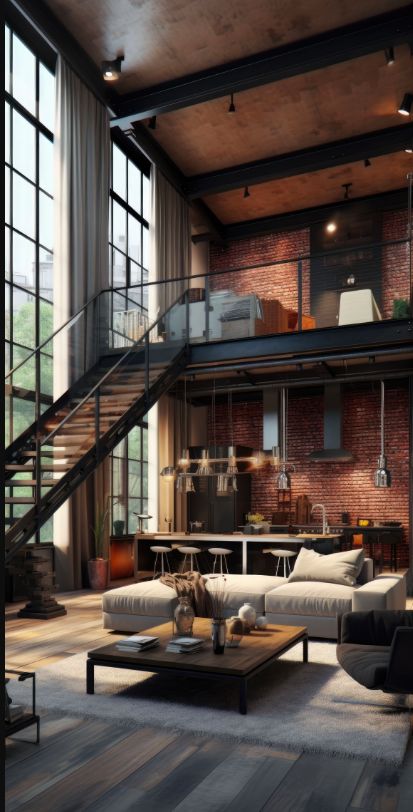
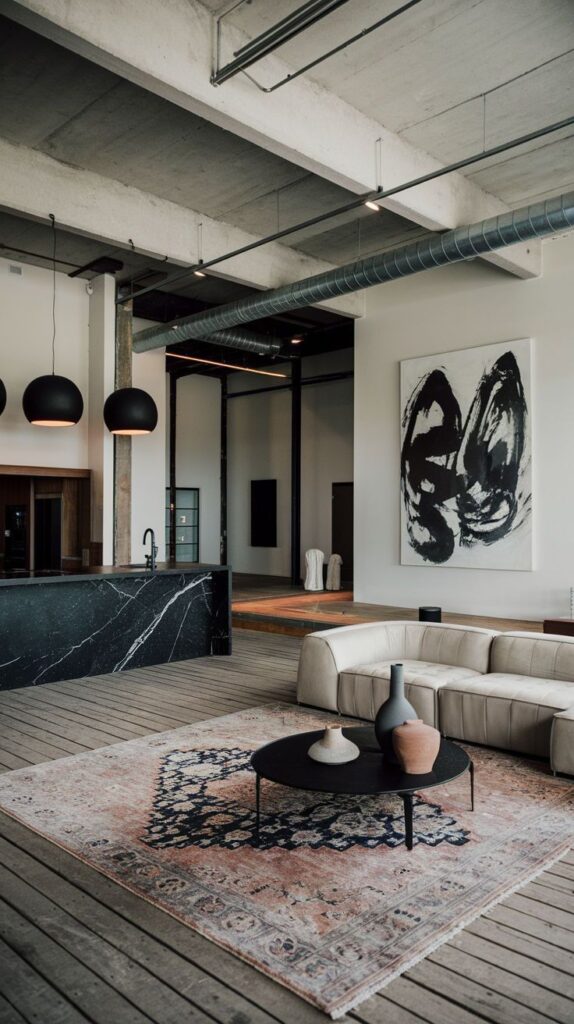
The main parts of industrial minimalism include exposed brick, concrete floors, and metal fixtures. These materials stay visible, not covered up. Furniture is simple and functional, often with clean lines and little decoration.
Colors are usually neutral. Shades of gray, black, and white dominate. Sometimes, natural wood tones add warmth. Lighting is straightforward, using fixtures that look like they belong in a factory or warehouse.
Open spaces are key. Rooms avoid clutter to keep the design clear and airy. This helps focus on structure and materials themselves.
Historical Background
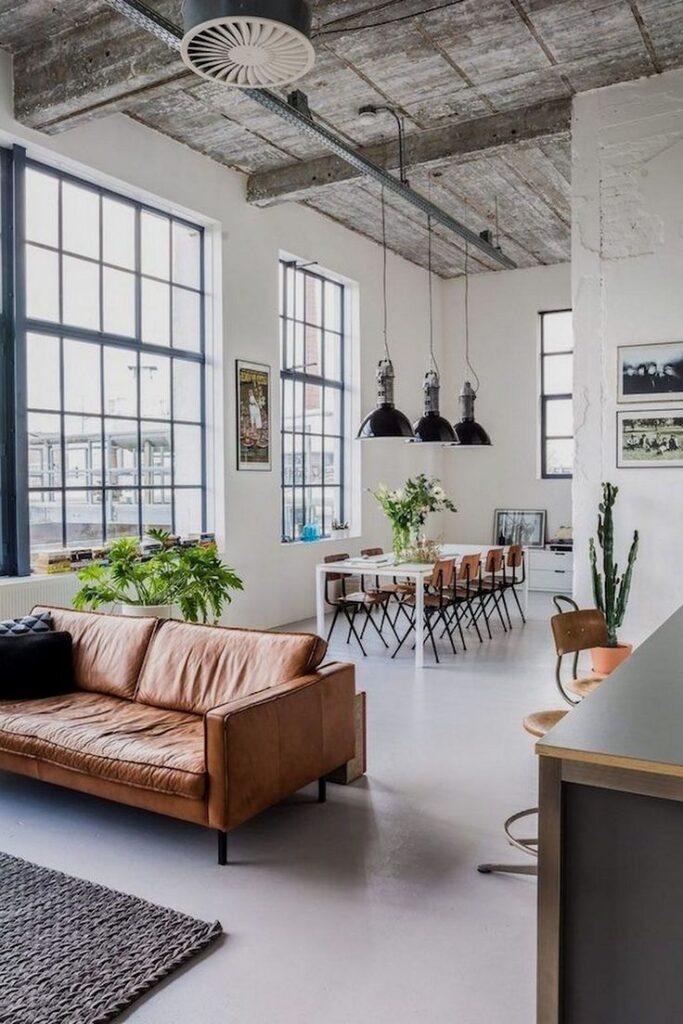

Industrial minimalism grew from old factories and warehouses turned into living spaces. During the 20th century, people saw beauty in unfinished buildings and industrial materials. Artists and architects began using these elements in new ways.
Minimalism, which started around the 1960s, influenced the clean and simple part of the style. Combining this with industrial elements created a fresh, modern look that feels raw but neat.
The style became popular as urban living increased. Renovators kept basic building features instead of hiding them, making industrial minimalism a response to both history and modern needs.
Contrasts With Other Design Styles

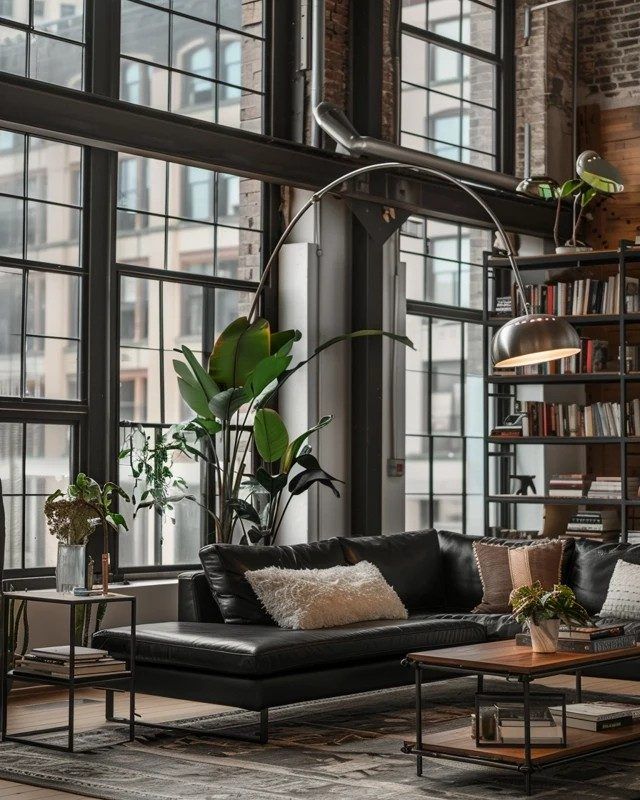
Industrial minimalism differs from traditional styles that use ornate details or heavy decoration. Unlike classic design, it avoids patterns, bright colors, and elaborate furniture.
Compared to pure minimalism, industrial minimalism adds texture and toughness through raw materials. It is less about smooth surfaces and more about showing the building’s bones.
Unlike industrial style alone, which can feel cluttered or rough, industrial minimalism keeps shapes and designs simple and tidy. This balance sets it apart from other designs blending form and function.
Key Features of Industrial Minimalist Design
Industrial minimalist design focuses on simplicity, utility, and raw beauty. It uses basic materials and colors while emphasizing practical furniture and open, uncluttered spaces.
Raw Materials and Finishes

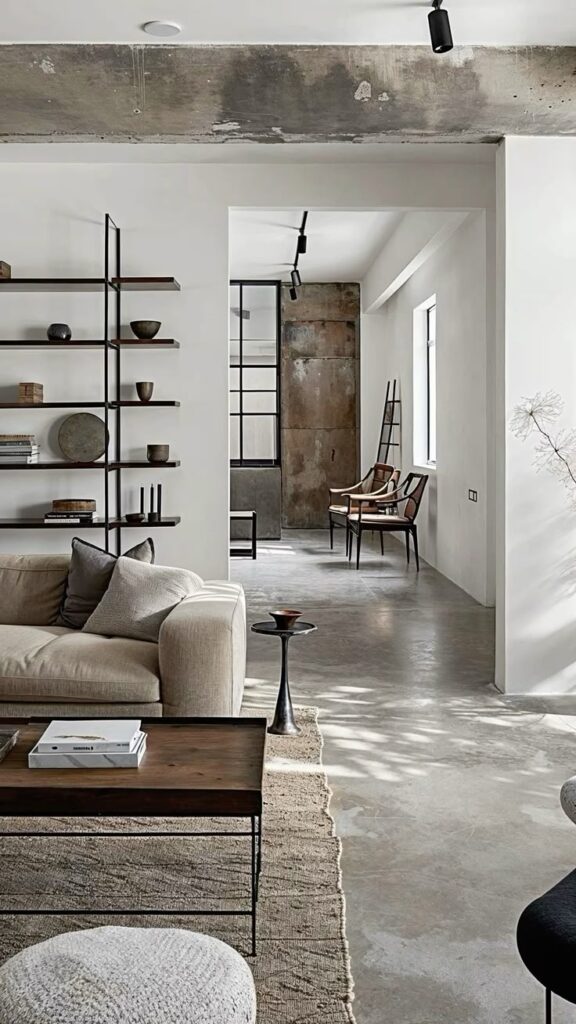
Raw materials are central in industrial minimalist design. Surfaces often show exposed brick, concrete, or rough wood. These materials keep the space looking natural and unrefined.
Metals like steel and iron are common, usually left untreated or with a weathered finish. This approach highlights the texture and imperfections of the materials.
Finishes are simple and matte rather than shiny. This reduces visual noise and enhances the honest, functional feel of the space.
Muted and Neutral Color Palettes


Colors in industrial minimalism are mostly muted and neutral. Shades of gray, black, white, and brown dominate the palette.
These colors create a calm, balanced environment without bright distractions. They also highlight the raw materials and structural elements of the design.
Occasionally, soft blues or greens appear but are used sparingly. The focus remains on understated tones that support simplicity and practicality.
Functional Furniture Selection

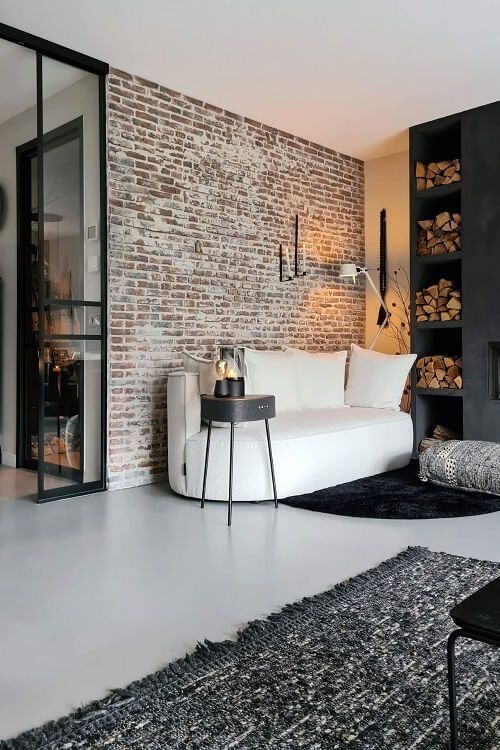
Furniture is chosen for function, not decoration. Pieces often have clean lines and geometric shapes.
Materials tend to match the raw industrial theme, such as metal frames with wooden tops or leather upholstery.
Storage is integrated and minimal, avoiding clutter. Only essential pieces are included to keep the space open and efficient.
Open Spaces and Clean Lines


Open floor plans are a must. Walls and barriers are minimized to promote freedom of movement and maximize light.
Clean, straight lines define both the architecture and furniture. Angles are precise and forms are simple.
This clarity helps create an organized and spacious feeling. It also allows the materials and shapes to stand out without competing with ornate details.
Incorporating Industrial Minimalism in Interiors
Industrial minimalism uses raw materials, simple shapes, and functional pieces. It focuses on clean designs with exposed features like brick, metal, and wood. Every space in a home can reflect this style with the right choice of furniture and décor.
Living Room Ideas


In a living room, industrial minimalism means using sturdy furniture with metal or wood frames. A leather sofa or simple fabric cushions work well. Exposed brick walls or concrete surfaces add texture without extra decoration.
Lighting is important. Use exposed bulbs or metal fixtures with a worn finish. Keep accessories to a minimum—think one or two statement pieces like a metal coffee table or an iron bookshelf.
Colors should be neutral—gray, black, and browns fit best. Keep the floor clear and avoid clutter. Open space makes the room feel larger and more inviting.
Kitchen and Dining Concepts

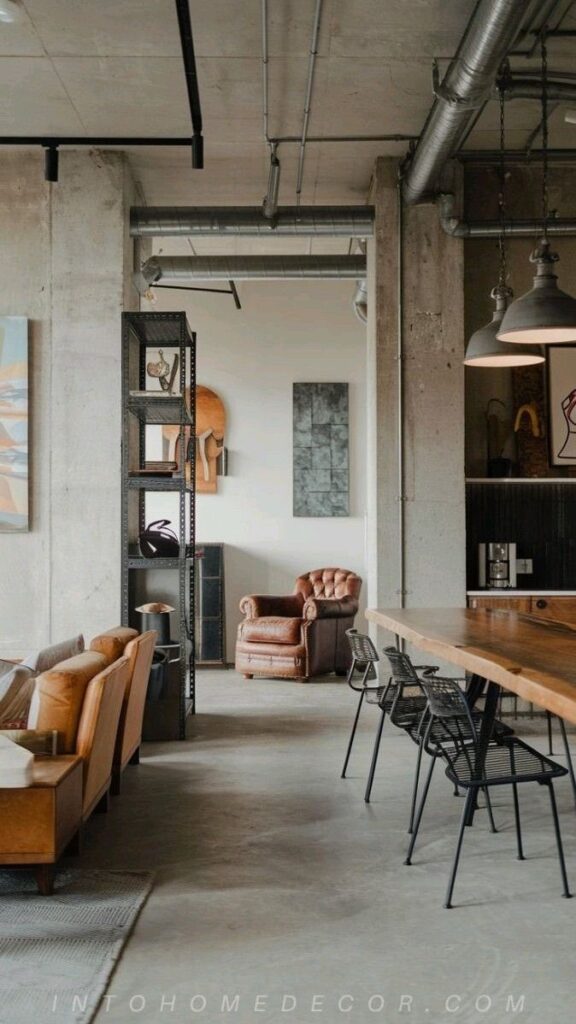
A kitchen in this style features open shelving with metal brackets or wooden planks. Cabinets should be plain, with matte finishes or natural wood. Countertops in concrete or stainless steel provide an industrial touch.
Dining tables are usually made from reclaimed wood or metal. Chairs should be simple and sturdy, such as metal stools or wooden seats without cushions. Avoid ornate designs or bright colors.
Functional lighting includes hanging metal pendant lights. Storage can be visible but organized, using baskets or containers made from natural materials. Keep surfaces clean and free of unnecessary items.
Bedroom Solutions


In the bedroom, industrial minimalism favors platform beds with metal or wood frames and simple linens. Avoid heavy or padded headboards. Neutral bedding colors such as white, gray, or muted tones help keep the space calm.
Furniture like dressers and nightstands should have clean lines and raw finishes. Industrial style lamps with metal shades or exposed bulbs work well for lighting.
Wall decorations should be minimal or absent. If used, metal wall art or simple framed prints suit the style. Floors are usually wood or concrete, occasionally softened with small, solid-colored rugs.
Lighting and Accessories for Industrial Minimalism
Lighting and accessories in industrial minimalism focus on clean shapes, raw materials, and practical forms. Each choice supports the space’s simple, functional style while adding interest through texture and bold features.
Statement Lighting Fixtures
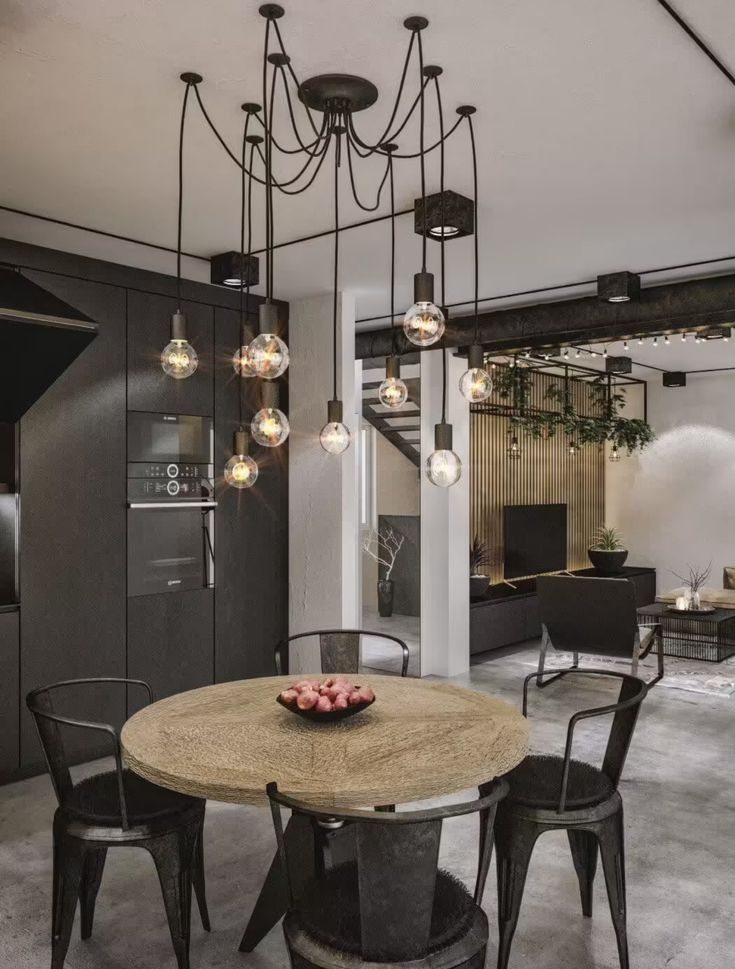

Lighting fixtures in industrial minimalism often serve as focal points. They feature materials like black metal, aged brass, or exposed bulbs. Pendant lights with simple geometric shapes or cage designs are common.
Fixtures usually hang from cords or chains, showing off their hardware. The light is often warm and soft, creating a comfortable but sharp atmosphere. Industrial lamps avoid excessive decoration, instead highlighting the structure and form.
Minimalist Art and Decor
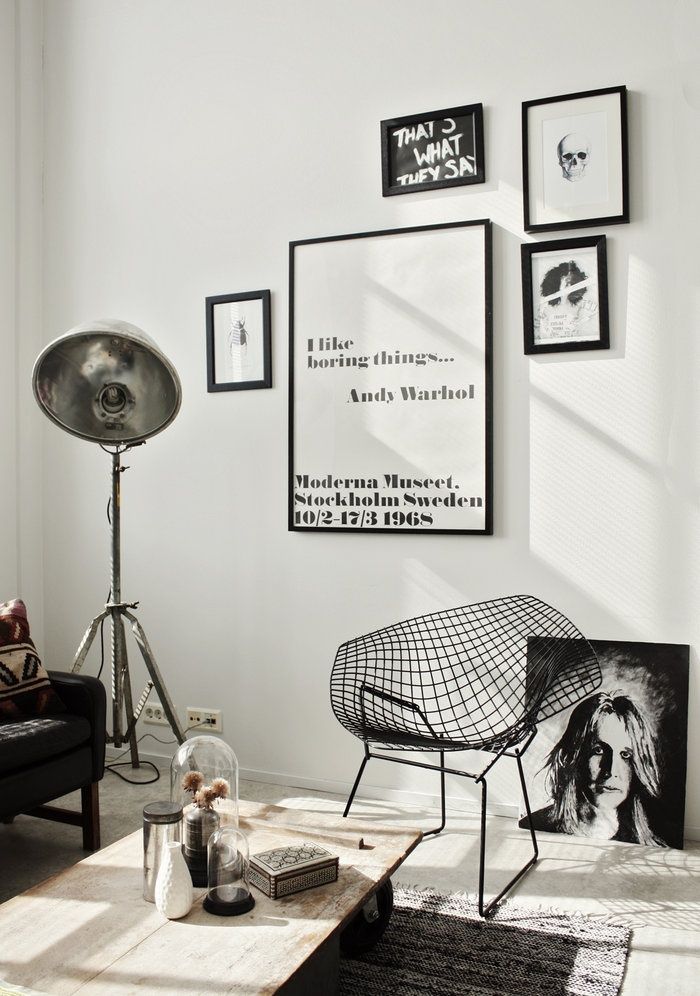
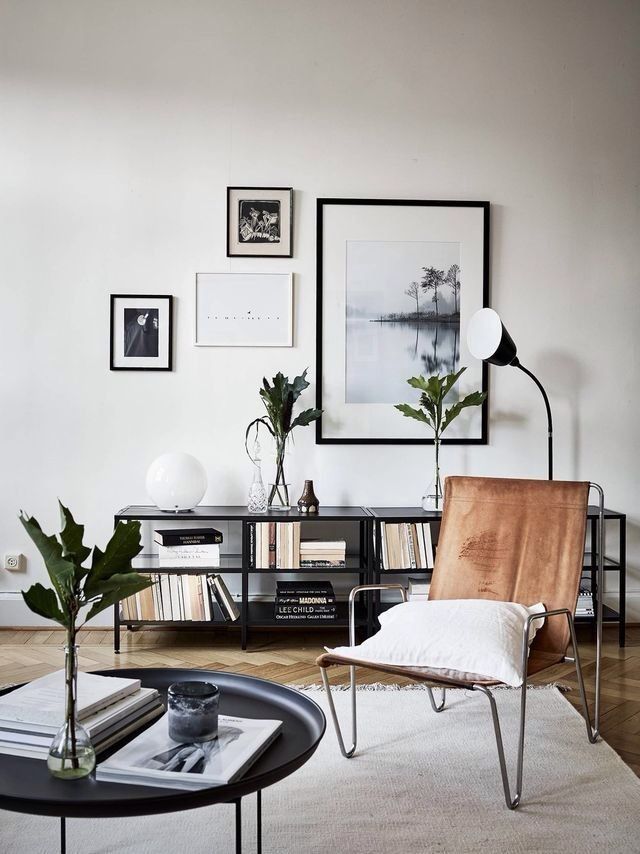
Art and decor in this style use minimal colors and clean lines. Pieces might include black-and-white prints, abstract shapes, or metal sculptures. The goal is to support the room without cluttering it.
Decorative items favor function over flair, like concrete planters or wire baskets. Sometimes, a single large piece acts as a subtle centerpiece. This keeps the focus on space and light rather than excess detail.
Textural Layers

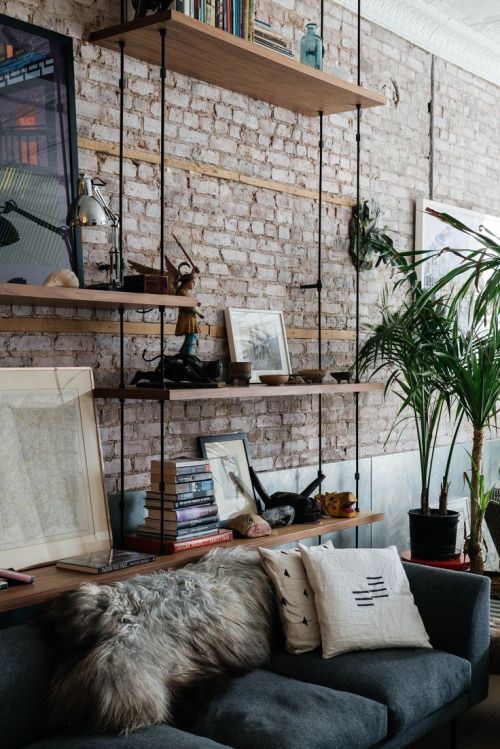
Textural layers bring depth without complexity. Materials include rough wood, metal surfaces, and natural fibers like jute or linen. These textures add warmth while maintaining the clean industrial look.
Throw pillows or rugs tend to have simple patterns or solid colors. Steel, leather, and unfinished wood provide contrast and keep the space from feeling cold. The key is balance, mixing textures to create a tactile, inviting environment.
Industrial Minimalism in Commercial Spaces
Industrial minimalism focuses on using raw materials and open spaces to create functional, simple designs. This style often highlights structural elements and industrial fixtures while keeping the space uncluttered and efficient.
Office Environments

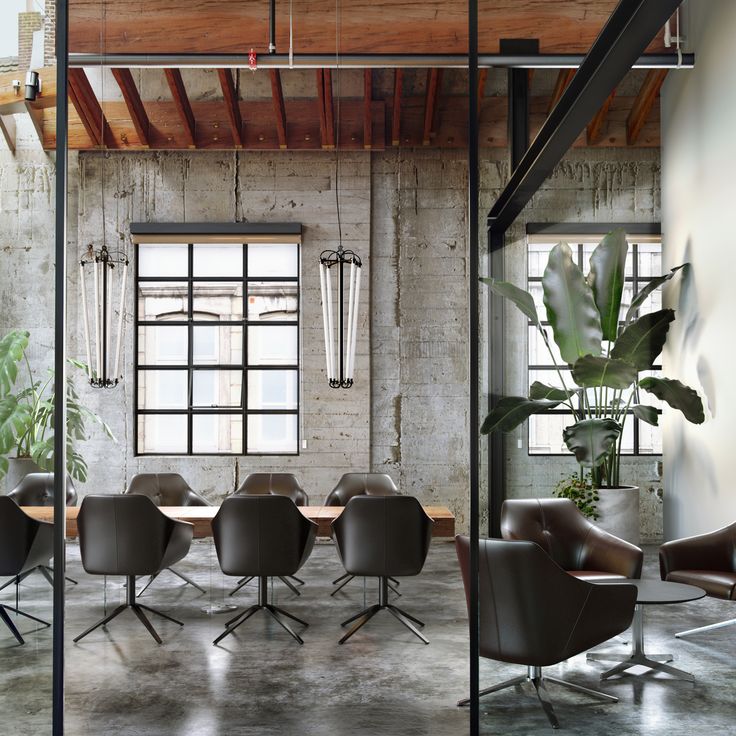
In offices, industrial minimalism blends exposed brick walls, concrete floors, and visible ductwork. These features create a bold backdrop that supports open-plan layouts. The style promotes collaboration by using minimal partitions and simple furniture, such as metal desks and ergonomic chairs without extra decoration.
Lighting often uses industrial fixtures like metal pendant lights or exposed bulbs to maintain a streamlined look. Neutral colors like gray, black, and white dominate to keep the space calm and focused. Storage solutions are integrated into the design, using metal shelving or built-in cabinets to reduce clutter.
Retail and Hospitality Applications
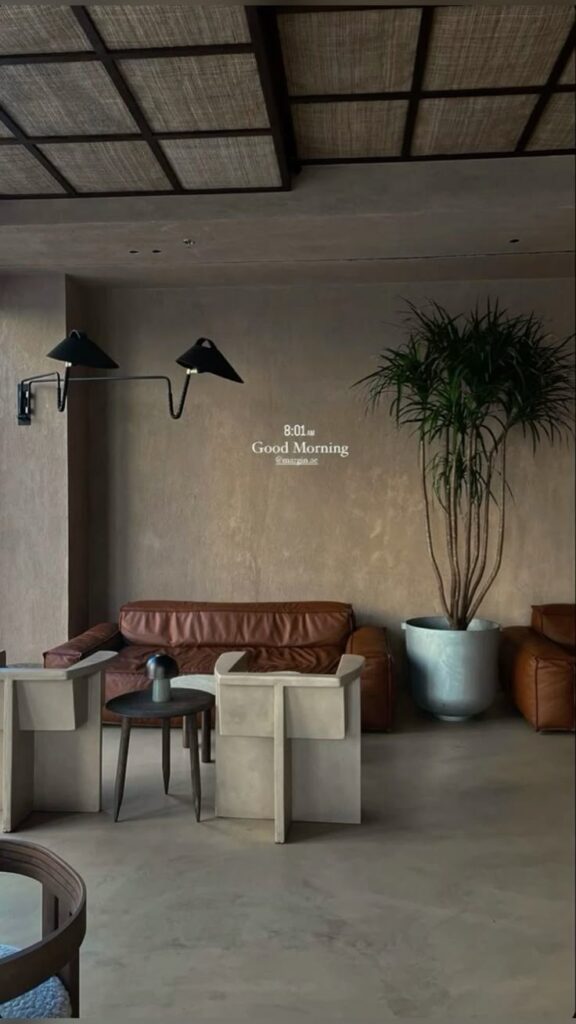
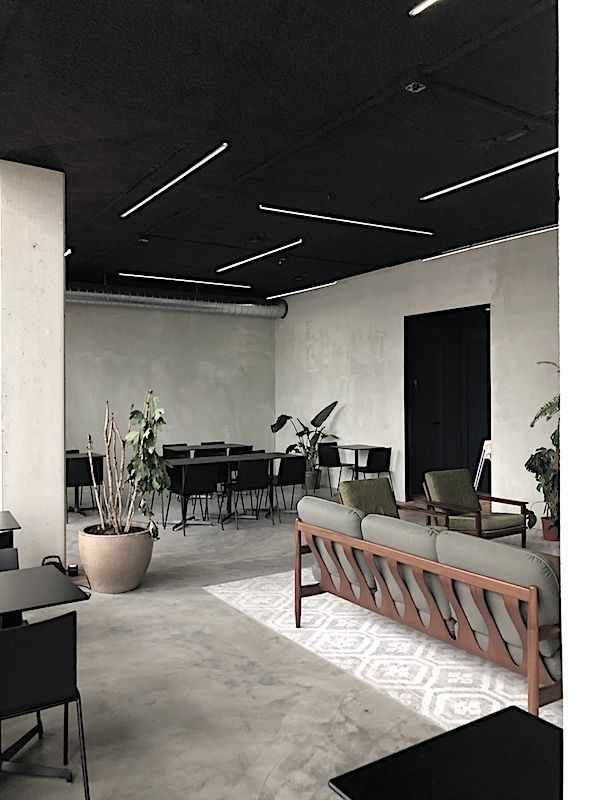
Retail and hospitality spaces use industrial minimalism to create a modern, inviting atmosphere. Materials like unfinished wood, steel, and concrete form the base of the interior. This makes stores and restaurants feel spacious and clean.
Fixtures are functional and durable, such as steel racks in retail or simple metal tables in cafes. Lighting plays a key role—with track or pendant lighting emphasizing products or seating areas. Colors often stay neutral with occasional warm tones from wood or leather to add comfort without losing the minimalist edge.
Sustainable Practices in Industrial Minimalism
Industrial minimalism focuses on using fewer resources and reducing waste. It often incorporates materials and methods that help protect the environment while keeping a clean and simple look.
Reclaimed Materials
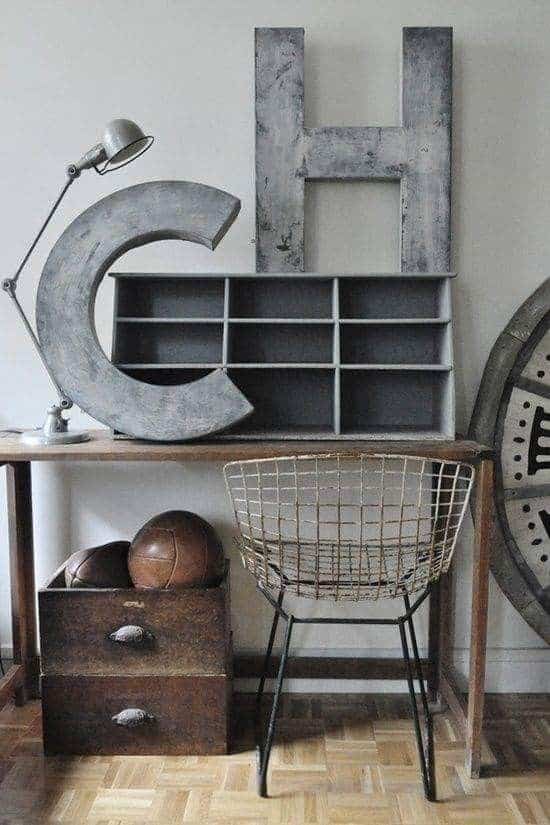

Reclaimed materials play a key role in industrial minimalism. Wood, metal, and bricks that were used in old buildings or factories are often reused. This lowers the need for new raw materials and cuts down on waste.
Using reclaimed wood, for example, adds character and texture while saving trees. Metal beams or pipes from demolished structures offer strength and style without new mining. These materials often come with imperfections that add to the industrial aesthetic.
Builders and designers must inspect these materials carefully. They ensure safety and durability before reuse. The process also includes cleaning, sanding, or treating surfaces to improve longevity without changing their natural look.
Energy Efficiency
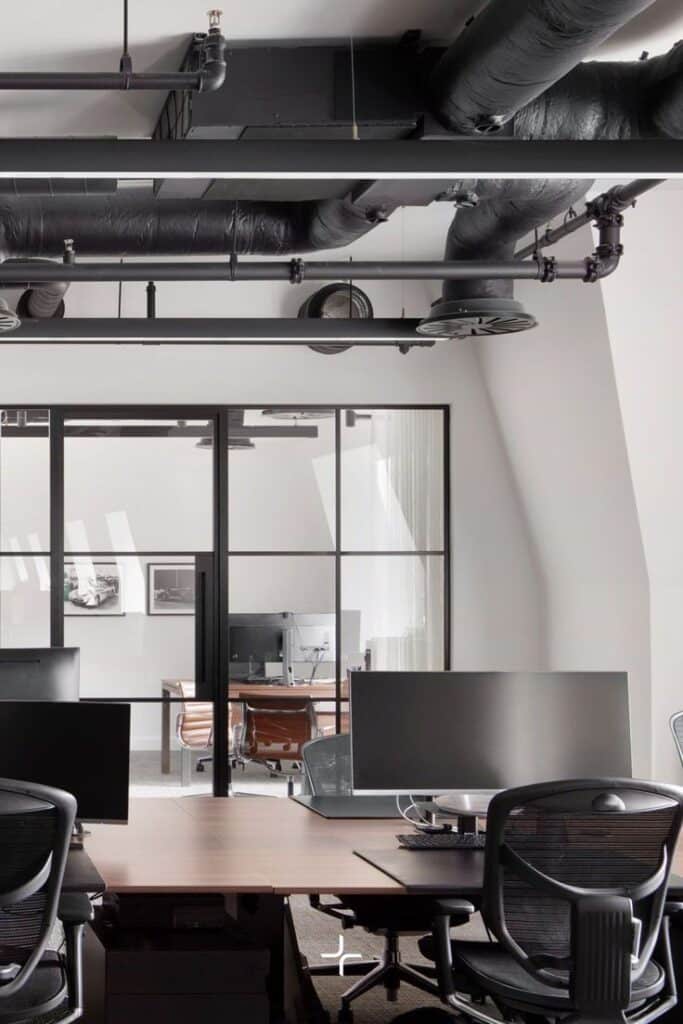
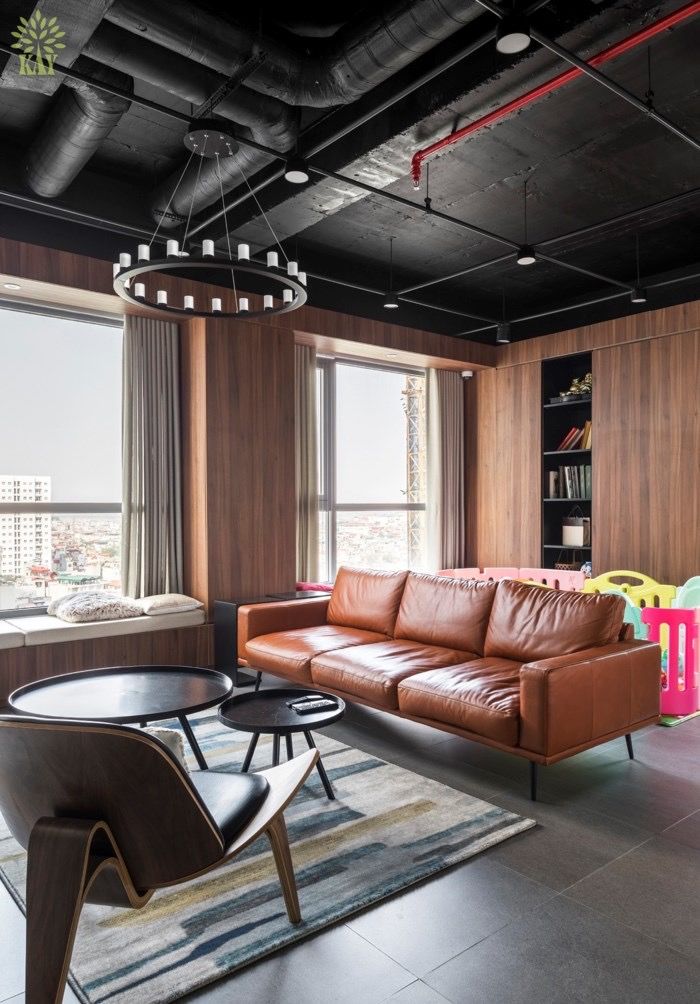
Energy efficiency fits well with the minimal use of space and materials in industrial design. Large windows and open layouts increase natural light, reducing the need for electric lighting during the day.
LED lighting is another common choice. It consumes less electricity and lasts longer than traditional bulbs. Designers also focus on proper insulation and ventilation systems to lower heating and cooling costs.
Smart thermostats and energy-efficient appliances further cut energy use. Together, these choices support a building’s function without extra power waste while keeping the industrial style simple and practical.
Common Challenges and Solutions
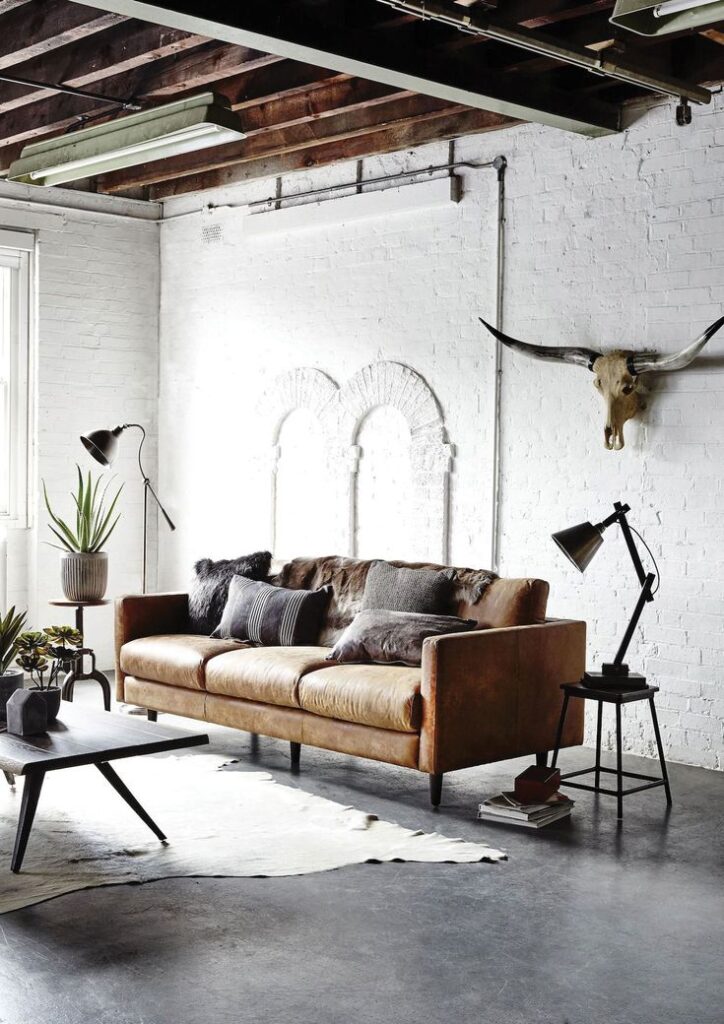
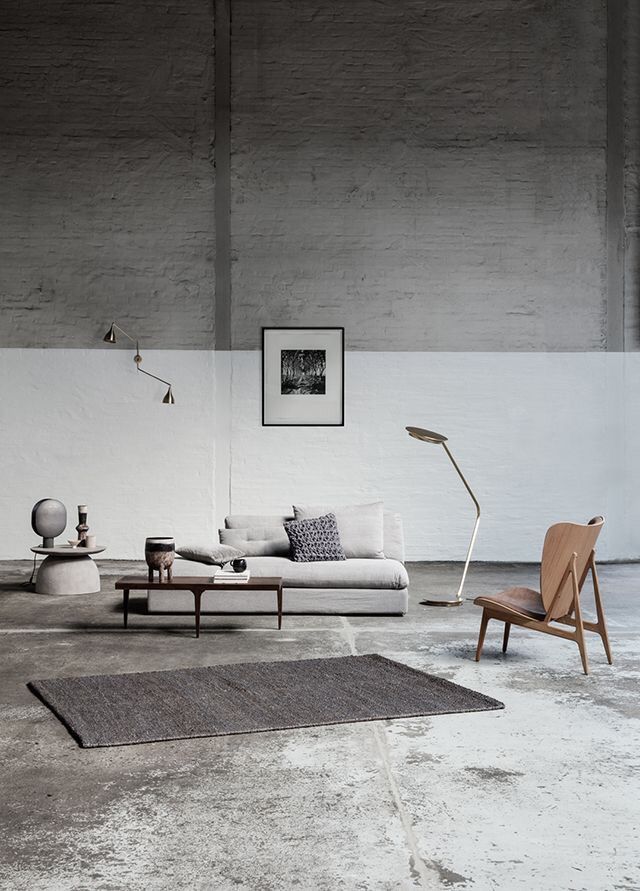
One common challenge in industrial minimalism is balancing raw materials with comfort. Exposed bricks and metals can feel cold or harsh. To fix this, adding soft textiles like rugs or cushions can warm the space without losing the minimalist style.
Another issue is avoiding clutter. Industrial minimalism focuses on clean lines and open spaces. People often struggle to keep surfaces clear. Using clever storage solutions, such as built-in shelves or hidden drawers, helps keep the area neat.
Lighting can also be tricky. Industrial design favors natural or simple lighting, but it may not be enough. Using adjustable lamps or warm-toned bulbs can improve functionality while maintaining the aesthetic.
| Challenge | Common Cause | Simple Solution |
|---|---|---|
| Cold atmosphere | Too much metal or concrete | Add soft textiles or plants |
| Clutter | Lack of storage options | Use hidden or built-in storage |
| Poor lighting | Minimal, harsh lighting | Add adjustable or warm lights |
People may find the style difficult to personalize. Adding a few unique items, like vintage furniture or simple art, can create a space that feels lived-in without breaking the minimalist feel.
Maintenance can be tough due to raw surfaces collecting dust. Regular cleaning with simple methods keeps the space fresh and prevents damage.
Future Trends in Industrial Minimalism

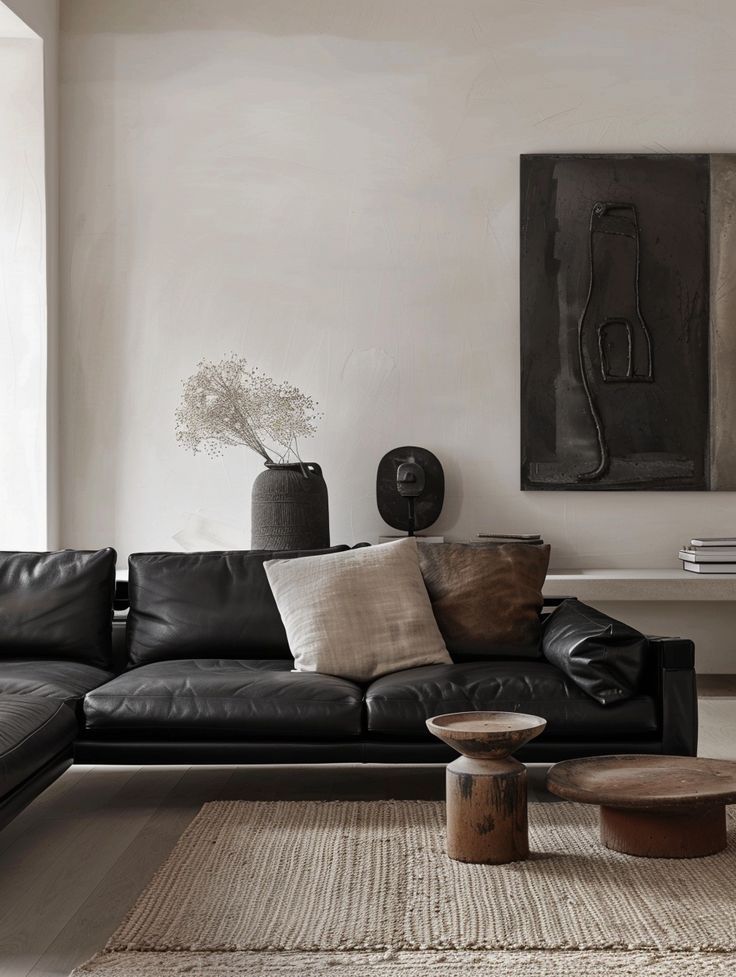
Industrial minimalism is evolving with a focus on sustainability. Designers are using recycled and eco-friendly materials more often. This supports both the environment and the minimalist aesthetic.
Smart technology is becoming part of industrial minimalism. Minimal designs now include hidden or integrated tech, such as smart lighting and climate control systems. This keeps spaces functional without clutter.
There is a growing trend toward warmer tones and softer textures. This shift balances the cold, hard look traditional to industrial style. It creates spaces that feel more inviting but stay simple.
Key trends to watch:
- Use of natural and recycled materials
- Integration of smart home devices
- Mixing metal with soft, warm textures
- Open spaces with minimal but functional furniture
These trends show how industrial minimalism adapts to modern needs while keeping its basic form. It merges style with function and sustainability.
- 0shares
- Facebook0
- Pinterest0
- Twitter0


